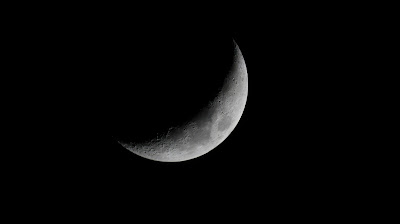In this post I'll explain my experience and troubles with video files taken with my Canon 600D.
Let's start at the beginning.
I've done my research on how to do the best pictures of the planets and the moon in our solar system. Surprisingly it came out that taking HD video is a better way than an actual photography. Than I first meet the software Registax, one of the softwares on the market which offers a fairly easy way to use those the recorded high quality frames (mine does 25 fps), sort out the sharpest ones and stack them to create eventually one fine photo.
I'd like to say it isn't easy, there was a bit of struggling at the start. The program didn't do the right thing at all.
Than it came out, that the .mov file (my camera records in this format) needs to be converted to .avi file. But not any kind of .avi, a special type which later can be used by Registax (I kept trying in the wrong .avi format and Registax was freezing all the time).
So everyone with Canon models, please follow the link/video below. It probably saves you a whole lot of impatient moments and disappointment.
The link is :
http://www.youtube.com/watch?v=NK8kyiDNTSo
The guy (Ano Nimo) explains what to download, where to download from and what to do with it. I've done the same as it is explained and it solved my problems straight away.
Briefly Virtual Dub is the software to convert the original .mov file to .avi. But it requires a special codec, which allows Virtual Dub to be able to handle that special type of .mov file (Codec called x264vfw - H264/MPEG-4 AVC).
Once you managed to insert the missing codec to Virtual Dub, do not forget to do the following setup
everytime you'd like to convert a video from .mov to .avi.
 |
| Open Virtual Dub. From menu choose select "Video", and from the sub menu "Compression". |
 |
| Than choose x264vfw - H264/MPEG-4 AVC codec and click OK. |
Now you can choose the file you need to convert. Eventually "File" and click to "Save as Avi", choose the folder you wish to save to and once it's done you are ready for Registaxing.












 As many of us are a visual type, just like myself - always found easier to learn constellations with smartphone apps where the lines can be seen. So once I've learned it, took a photo on a fairly clear night from my garden and thought to draw the Orion on it. It wasn't as easy as I first reckoned but needs some concentration that's it.
As many of us are a visual type, just like myself - always found easier to learn constellations with smartphone apps where the lines can be seen. So once I've learned it, took a photo on a fairly clear night from my garden and thought to draw the Orion on it. It wasn't as easy as I first reckoned but needs some concentration that's it.